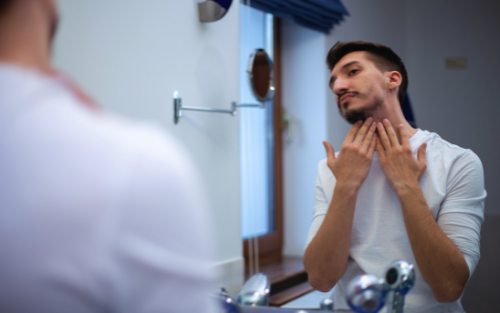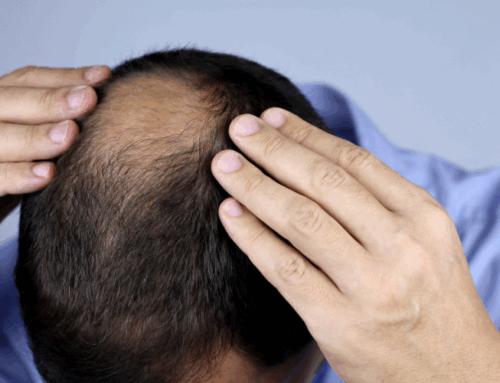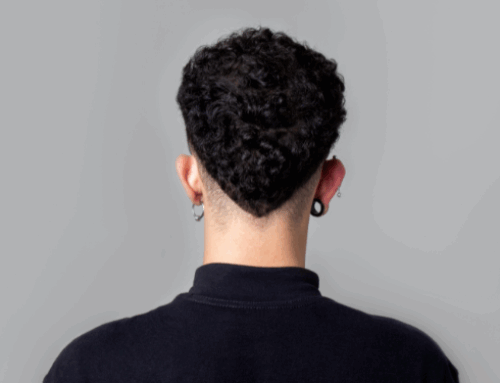Growing a beard should be a proud and empowering experience, but for many men, it becomes a frustrating journey when their facial hair doesn’t grow evenly. A patchy beard is one of the most common grooming issues men face, and it can seriously affect confidence and style. The good news? A patchy beard isn’t the end of your beard journey. With the right strategy, tools, and understanding of why it’s happening, you can transform those sparse spots into a fuller, healthier beard over time.
In this guide, we’ll explore everything you need to know about fixing a patchy beard. From the root causes and natural growth cycles to proven grooming strategies and medical interventions, this article is packed with expert-backed, real-world advice. Whether you’re in your 20s just starting out or a seasoned beardsman struggling with thinning areas, this resource is designed to help you make informed grooming decisions.
Let’s begin by understanding the fundamental question most men have: Why is your beard patchy in the first place?
What Causes a Patchy Beard in the First Place?
Understanding the reasons behind patchy facial hair is the first step toward fixing it. Beard growth is affected by several internal and external factors, and many of them are outside your immediate control. Here’s a breakdown of the main causes:
1. Genetics & Family History
Your genetics play the biggest role in determining your beard growth pattern. If your father, grandfather, or uncles had patchy or thin beards, chances are high that you’ll experience similar growth. Beard follicles are distributed based on DNA, and some men simply have fewer active follicles in certain areas like the cheeks or jawline. While you can’t change your genetics, understanding this limitation allows you to work around it and focus on optimizing the hair you do have.
2. Age and Hormonal Development
For many young men, a patchy beard is simply a result of age. Facial hair develops gradually and may not fully mature until your late 20s or even early 30s. Testosterone levels increase with age, and so does the density and coverage of your beard. If you’re in your teens or early 20s, the best strategy may be to simply wait and allow your beard to fill in over time. Meanwhile, adopt healthy grooming habits to support the process.
3. Testosterone & DHT Levels
Testosterone and its derivative DHT (dihydrotestosterone) are essential for beard growth. Men with low levels of these hormones often experience slow or patchy beard development. This can be influenced by genetics, health conditions, or lifestyle factors like stress and poor diet. Boosting your testosterone naturally through exercise, proper nutrition, and rest can positively impact beard growth, though hormone therapy should only be considered under medical guidance.
4. Alopecia Areata and Skin Conditions
Alopecia areata is an autoimmune condition that causes hair loss in round patches. It can affect the scalp, beard, or other body hair and often appears suddenly. Skin issues like eczema, fungal infections, or chronic irritation can also lead to hair loss in certain areas of the beard. If your beard patches are severe, spreading, or accompanied by redness or itching, it’s essential to consult a dermatologist for diagnosis and treatment options.
5. Poor Nutrition and Lifestyle Choices
Beard health is closely tied to your overall well-being. Deficiencies in vitamins like biotin, zinc, or B-complex can inhibit hair growth and lead to patchiness. Similarly, habits like smoking, excessive alcohol consumption, and chronic stress can restrict blood flow and damage hair follicles. If you’re not fueling your body properly, your beard won’t have the resources it needs to grow evenly.
Should You Worry About Beard Patches?
Seeing gaps in your beard can be disheartening, but not every patch is a problem that needs fixing. It’s important to assess whether the patchiness is normal, temporary, or indicative of a deeper issue.
When It’s Normal , and When to See a Doctor
Some level of patchiness is completely normal, especially in the early stages of growth. Many men notice uneven areas during the first few weeks, but eventually see improvement as the beard matures. However, if patches persist beyond a few months or if you suddenly lose hair in circular areas, it might signal a condition like alopecia areata. If you suspect a medical issue, don’t hesitate to consult a dermatologist or primary care provider.
Mental Effects of Beard Patches on Confidence
Let’s not ignore the psychological side of patchy facial hair. Beard envy is real, and social media’s portrayal of perfect beards can fuel self-doubt. While grooming is a personal choice, the impact on self-esteem can be profound. Embracing your unique growth pattern or learning how to style around patchy areas can go a long way toward boosting confidence. Your beard is part of your identity, but it doesn’t define your worth.
10 Proven Ways to Fix a Patchy Beard (Naturally and Professionally)
Now that you know the causes, it’s time to take action. Here are tried-and-tested methods to improve the fullness and appearance of your beard:
1. Let It Grow – Patience Pays Off
Many men shave too early, assuming their beard won’t fill in. However, facial hair grows in cycles, and what looks patchy at week two might look fuller by week six. Give your beard at least 8 to 12 weeks to fully develop before evaluating it. Don’t trim too soon, you might be cutting off new growth before it has a chance to blend in.
2. Choose a Flattering Beard Style
Not all beard styles require full coverage. Goatees, chin straps, and heavy stubble styles work well with patchy cheeks. Tailoring your style to suit your growth pattern is often a smarter solution than forcing a full beard that doesn’t look natural. Consult your barber for ideas that highlight your strengths and minimize patchy areas.
3. Beard Brushing and Stimulation
Using a boar bristle brush helps exfoliate the skin, stimulate blood flow, and train hairs to grow in your desired direction. Brushing your beard regularly also distributes natural oils and can help cover lighter patches by styling surrounding hairs over them.
4. Use Beard Oils and Balms
Quality beard oils not only moisturize your facial hair but also nourish the skin underneath. Look for oils containing jojoba, argan, and castor oils, which support healthy growth. Beard balms add hold and volume, helping to mask patchy areas while giving your beard a more uniform shape.
5. Eat a Beard-Boosting Diet (Biotin, Zinc, Protein)
Hair is made of keratin, a protein, so getting enough of it in your diet is essential. Also, include foods rich in biotin (eggs, nuts), zinc (shellfish, legumes), and vitamins A, C, and E to promote healthy follicle function. A balanced diet helps your beard grow stronger, faster, and fuller.
6. Get Consistent Sleep and Manage Stress
Stress and lack of sleep negatively affect hormone levels and blood circulation, which are vital for hair growth. Aim for 7-8 hours of quality sleep and practice stress-relief techniques like meditation, exercise, or hobbies to maintain overall wellness.
7. Work Out: Boost Natural Testosterone
Resistance training and HIIT workouts are proven to increase testosterone levels, which can lead to improved beard growth. A consistent fitness routine also boosts circulation and nutrient delivery to the skin and follicles.
8. Quit Smoking and Limit Alcohol
Smoking restricts blood vessels and reduces oxygen supply to your hair follicles, stunting beard growth. Excessive alcohol can also deplete essential vitamins and lower testosterone. Cutting back on both can improve your beard and overall health.
9. Consider Minoxidil (with Caution)
Minoxidil, the active ingredient in Rogaine, has shown promise in stimulating beard growth for some men. While it’s not officially approved for facial use, many beardsmen have reported positive results. Consult a healthcare provider before using it, and follow guidelines closely to avoid side effects.
10. Medical Treatments: PRP, Transplants, Dermatology
If natural methods fail, professional treatments like PRP (Platelet-Rich Plasma) therapy or hair transplants can offer long-term solutions. These are more invasive and costly but may be worth exploring for men with severe patchiness or scarring alopecia.
Best Beard Products for Patchy Beard Growth
Finding the right products can make a world of difference in improving a patchy beard. While genetics and hormones set the stage, using high-quality grooming tools and treatments helps optimize growth, thickness, and appearance. Below are some of the most effective beard products to include in your patchy beard solution kit.
Beard Growth Oil & Serum
Beard oils and serums are foundational in any beard care routine, especially when targeting patchy growth. These formulas are usually infused with essential oils like jojoba, argan, or rosemary that nourish the skin and follicles. The consistent use of beard growth oil helps moisturize dry skin, prevent itchiness, and stimulate blood flow to dormant hair follicles. Some beard serums also contain ingredients like biotin or caffeine, which can help awaken sluggish follicles, especially in patchy zones.
Beard Shampoo and Conditioner
Many men neglect proper beard washing, not realizing how buildup and clogged pores can hinder growth. Specialized beard shampoos and conditioners are designed to clean without stripping natural oils. Look for sulfate-free options enriched with ingredients like aloe vera, shea butter, or vitamin E. A clean, conditioned beard lays the groundwork for better growth and healthier skin underneath, both of which are essential when working on patchiness.
Beard Roller for Microneedling
A beard roller is a microneedling tool that uses tiny needles to create micro-tears in the skin, which can stimulate collagen and boost blood flow. This process helps awaken inactive follicles and increases nutrient absorption when used with beard oils or serums. When used consistently (typically 1–2 times per week), a beard roller can enhance the effectiveness of topical growth products and accelerate filling in patchy areas.
Beard Balm and Styling Cream
While beard balm and styling creams don’t directly influence growth, they play an important role in managing patchiness. These products help shape your beard, tame unruly strands, and give the illusion of a fuller, more even beard. Look for balms with ingredients like beeswax, lanolin, or cocoa butter for hold, plus natural oils for nourishment. Applying balm also helps cover thinner areas while promoting long-term beard health.
Beard Comb and Boar Bristle Brush
Grooming tools like a wooden comb and boar bristle brush are more than just styling aids, they help distribute natural oils, exfoliate the skin, and improve circulation. Combing your beard daily can also train your hair to grow in a more uniform direction, reducing the appearance of patchy areas over time. Brushing with a boar bristle brush before applying oil can maximize absorption and detangle wiry strands, contributing to a healthier-looking beard.
Natural Beard Growth Tips That Work
Not every solution for patchy beard growth comes in a bottle. Nature offers plenty of ways to encourage healthier and faster beard development, especially when paired with a consistent routine and self-care.
Herbal Oils (Castor Oil, Amla Oil)
Castor oil is one of the most widely recommended natural remedies for beard growth. Rich in ricinoleic acid and omega-6 fatty acids, it helps improve blood circulation and strengthens hair roots. Amla oil, derived from Indian gooseberries, is another potent option. It’s packed with vitamin C and antioxidants that nourish the follicles and support hair pigmentation. Applying these oils regularly, ideally after a warm towel compress, can help stimulate growth in sparse areas over time.
DIY Beard Masks & Nutrient Packs
Homemade beard masks made with ingredients like egg yolk, honey, and coconut oil offer a rich supply of protein, moisture, and nutrients. You can also mix fenugreek powder or banana with olive oil for added strength and softness. Applying these masks once a week helps reduce dryness and breakage, giving your beard a thicker, healthier appearance while feeding the follicles from the outside in.
Scalp Massage Techniques Applied to the Beard Area
Massage isn’t just for your head, it can work wonders for your beard, too. Using circular motions with your fingers or a beard massager, gently stimulate the jawline, chin, and cheek areas. This increases blood circulation, relaxes tense facial muscles, and encourages nutrient delivery to the follicles. You can boost the effects by applying warm oil beforehand, turning your massage into a growth-activating ritual.
Best Beard Styles for Patchy Beards
A patchy beard doesn’t mean you have to give up on style. Certain beard styles work exceptionally well with sparse or uneven growth. Choosing the right shape can help highlight your strongest areas while minimizing patchiness, creating a cleaner, more deliberate look.
The Goatee
The goatee is one of the most versatile beard styles for men dealing with patchiness on the cheeks. Since it focuses on the chin and mustache area, it lets you work with the densest part of your beard. Whether you opt for a full goatee or a disconnected version, it can frame the mouth nicely and provide a sophisticated appearance with minimal maintenance.
The Van Dyke
This classic style combines a pointed chin beard with a detached mustache, allowing full control over the beard’s shape while ignoring weaker areas. It’s ideal if your cheeks are patchy but you have strong growth on your upper lip and chin. The Van Dyke gives off a bold, artistic vibe and is easily maintainable with regular trimming.
Short Boxed Beard
The short boxed beard is a neat, trimmed style that hugs the jawline and sits close to the face. It works well if your patchiness is minimal or isolated. By keeping the length short and shaping the outline precisely, you can maintain a professional, structured look. Fade the sideburns or blend the edges into your hairstyle to soften any uneven spots.
Stubble Styles
Stubble is a game-changer for men with inconsistent beard growth. Whether it’s light, medium, or heavy stubble, the style requires less density to look intentional. Daily or bi-weekly trimming keeps it tidy and masculine. Stubble also enhances jawlines and adds ruggedness without requiring a full beard.
Chin Strap or Jawline Focused
The chin strap involves shaping facial hair along the jawline and chin, completely avoiding the cheeks. This is ideal if your cheek growth is sparse but your jaw and chin grow well. Pair it with a mustache or leave it bare, either way, it emphasizes structure and definition, helping you make the most of what you’ve got.
When to Consult a Professional Barber or Dermatologist
Sometimes, dealing with a patchy beard goes beyond grooming. If your patchiness is significant or accompanied by other symptoms, it may be time to get expert advice. Both barbers and dermatologists play vital roles in helping you diagnose, treat, and style a patchy beard effectively.
Signs of Medical Conditions
Persistent bald patches, redness, irritation, or sudden hair loss could indicate underlying conditions like alopecia areata, fungal infections, or hormonal imbalances. A dermatologist can examine your skin and follicles to rule out medical causes and offer treatment plans such as topical steroids or hair growth stimulants like minoxidil.
Getting a Style that Complements Your Beard Growth
Professional barbers understand how to work with your natural growth patterns. If you’re unsure about what style suits your beard, a barber consultation can help. They’ll assess your facial structure, hair density, and lifestyle to recommend a flattering and low-maintenance cut that enhances your appearance despite the patchiness.
Barber Tips for Creating Fullness with a Patchy Beard
At Five Star Barber Brand, our experts recommend techniques like strategic fading, line-up shaping, and blending patchy zones into fuller areas to create the illusion of thickness. With the right trim and tools, even a sparse beard can look intentional and stylish.
Expert Insights from Five Star Barber Brand
Topical Authority and EEAT Boost
Drawing from years of hands-on grooming experience, the team at Five Star Barber Brand shares insights that combine practical barber wisdom with up-to-date grooming science. We’re here to help you grow a beard that fits your identity, not just your genetics.
Grooming Advice Based on Beard Type
Not all beards behave the same. Coarse hair needs different care than fine, straight hair. Our barbers offer personalized grooming regimens based on your beard type, including tailored product suggestions, trimming frequency, and moisturizing tips to strengthen weak patches.
Styling Techniques That Hide Patches Naturally
We use a variety of pro techniques such as soft shadowing, downward brushing, and beard contouring to camouflage thin spots. Pairing shorter cheek trims with longer chin growth can visually balance your beard while adding shape and depth.
Our Recommended Beard Care Routine
Consistency is key. We advise a daily beard care routine that includes gentle cleansing, hydrating with beard oil, and combing with a boar bristle brush. Weekly exfoliation and conditioning treatments can improve skin health and prevent ingrown hairs, making way for more even growth.
Suggestions: Your Beard Journey is Personal
Growing a beard is more than a grooming choice, it’s a personal journey. Everyone’s timeline and challenges are different, and that’s perfectly normal.
Focus on Progress, Not Perfection
You might not have a full beard in 30 days, but with patience and the right care, visible progress is achievable. Take photos, track your growth, and celebrate small wins. Over time, your beard will become an authentic expression of who you are.
Confidence Comes with the Beard You Own
Whether you’re rocking a bold goatee, neat stubble, or growing it all out, own it. Confidence isn’t about having a perfect beard, but about embracing the one that’s yours. At Five Star Barber Brand, we’re here to support your journey every step of the way.






Leave A Comment